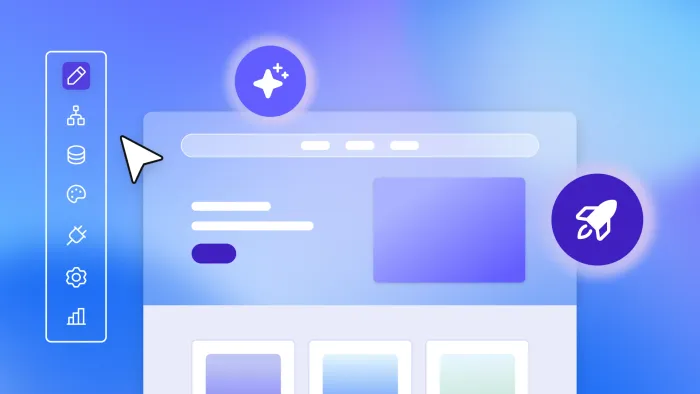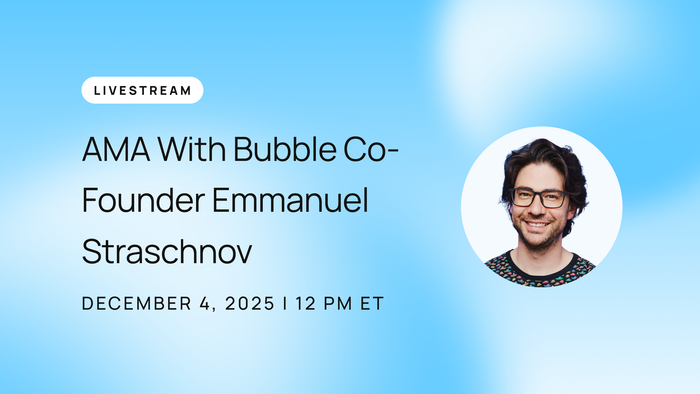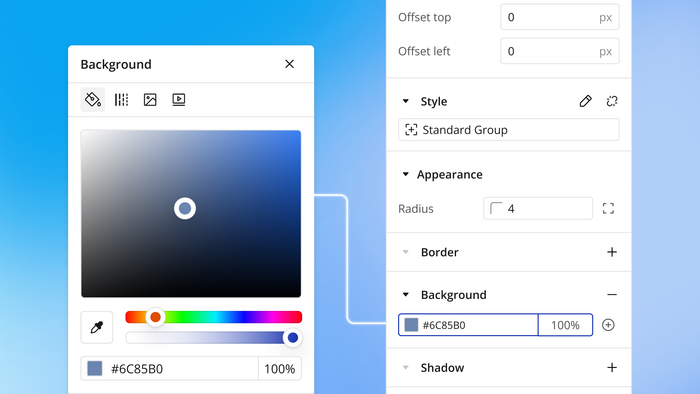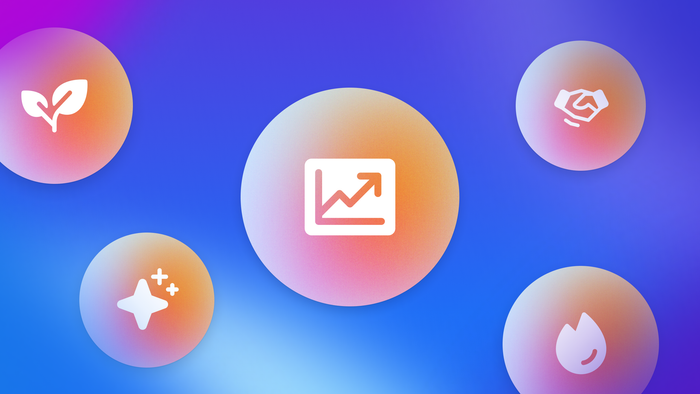A successful app launch doesn’t happen by accident. It’s the result of careful planning and clear goals at every step. You need to build momentum before release, make a strong first impression, and keep growing after users come onboard.
In this guide, we’ll break the process down into three key stages — pre-launch, launch, and post-launch — and walk you through what to do at each one. This step-by-step approach will help you get the most out of your launch and set your app up for long-term success.
The importance of getting your app launch right
Your app launch is a make-or-break moment. A strong launch helps you stand out in a crowded market, reach early adopters, and build momentum. A weak one can leave your app buried in the app store, without the attention it deserves.
With millions of apps for users to choose from, visibility is a serious challenge. No matter how well your app performs, it needs a well-executed launch to cut through the noise. At the same time, first impressions are everything. Once users discover and download your app, it needs to work flawlessly from the start. Many won’t give it a second chance if it crashes or feels clunky. If they don’t see value immediately, they’ll move on without a second thought — or worse, warn others not to bother.
Launching an app isn’t just about hitting publish. It takes a well-planned strategy and coordinated effort. From testing and refining to positioning and promotion, every piece of your launch plan plays a role in whether users find, try, and continue using your app.
Pre-launch: Setting up for success
The secret to a successful app launch is all the work you put into planning before you ever submit to an app store. Here are the key aspects to consider.
Start with research and planning
Research your competitors to understand what they offer, how users respond, and where opportunities exist. How are similar apps positioning themselves? What are people praising or complaining about in app store reviews?
Define your audience and the specific benefit your app delivers for them. Who is it for, and why should they care? From there, craft a unique value proposition (UVP) to guide your app go-to-market (GTM) strategy.
Set a few specific KPIs to measure success and catch early warning signs. Metrics like activation rate, day 7 retention, or average app store rating can help you understand what’s working and where to improve.
Decide on a monetization model (e.g., freemium, ad-supported, or subscription-based), and make sure it aligns with the way users experience value in your app.
Plan your marketing budget alongside development. Even modest budgets can make a difference when you focus on the right channels.
Prepare your product
If you already have an app that’s built and ready to go, great! If not, start with a minimum viable product (MVP) — the smallest set of features that delivers your app’s core value. Your MVP should solve one problem effectively, without trying to do everything at once. It’s the foundation you’ll use to validate your idea, gather feedback, and grow.
Once your MVP is ready, put it through rigorous testing. Start with internal QA, then branch out to a soft launch with a trusted group of users to uncover edge cases, unexpected behaviors, or UX friction. Even a single bug or confusing interaction can sour a user’s first impression, so it’s crucial to find and fix issues before launch.
If you’re planning to release on iOS or Android, you’ll also need to prep your app store assets in advance. That includes your app icon, screenshots, a compelling description, and a privacy policy.
When building on Bubble, this is all significantly easier. Bubble’s AI-powered no-code development platform lets you quickly turn ideas into fully functional apps without writing a single line of code. And the MVP you build on Bubble isn’t a disposable prototype. You can continue iterating until it’s a polished, launch-ready product.
Build buzz before you launch
The pre-launch phase is your chance to generate interest, create momentum, and build an audience that’s ready and waiting for launch day. You don’t need a massive marketing budget, but you do need a plan to reach and engage your target users.
Start by creating a landing page that clearly communicates your app’s value. Include visuals or a short demo, and give visitors a way to sign up for updates. These early subscribers become your first advocates and often your first downloads.
Your launch shouldn’t feel like it came out of nowhere either. During the prelaunch phase, it’s important to establish a presence in the spaces your users frequent. That could mean posting on social media, participating in forums or Discord servers, or contributing to relevant subreddits. Share sneak peeks, invite feedback, and talk about the problem your app solves.
Consider building in public by sharing your progress, challenges, and insights along the way. It’s a great way to build community, attract early supporters, and show the work that goes into your product.
Ask beta testers, advisors, or early access users for quotes you can use in your marketing. Social proof goes a long way, especially when people are deciding whether to install something new. Highlight positive feedback on your landing page, app store listing, or in your emails.
Identify niche blogs, newsletters, and creators in your space, and reach out with a press kit that includes your pitch, screenshots, download links, and a release date. Let them know what’s coming so they’re prepared to cover your app when it launches.
Launch: Going live and getting your app noticed
With your app built and your prep work complete, it’s time to launch. But that means more than simply pushing your app live. A successful launch is a coordinated effort across multiple channels to capture the attention of your target audience.
Submit your app for approval
Before your app can go live, it needs to pass the approval process of the app store(s) you submit it to. Most mainstream apps launch on both the Apple App Store and Google Play to reach the widest audience, but depending on your resources and user base, you may choose to focus on just one initially.
Since both Apple and Google review apps before publishing, you’ll need to factor in extra time. While most apps are approved within a day or two, outliers can experience delays of up to a week. And if either store requires changes, that can push your timeline back further. Submitting well ahead of schedule gives you room to resolve any issues without delaying your launch.
Before you submit your app for review, take time to review the App Store Review Guidelines and Google Play requirements to make sure your app doesn’t get held back by something you could have addressed in the first place.
This is also the time to implement your app store optimization (ASO) strategy. Use relevant keywords in your title and description, write clear and compelling copy, and include polished visuals that showcase your app. These elements affect how your app appears in search results and how likely users are to download.
If you’re building on Bubble, the submission process becomes much simpler. Bubble’s native mobile app development is built on the React Native framework, which means you only have to build the app once (with no code), and then you can submit it directly to both app stores. No need to choose between ecosystems or maintain two separate codebases.
Activate your channels
Once your app goes live, it’s time to engage in a coordinated outreach effort across email, social media, your website, and press contacts to drive a strong early push.
Start by notifying your email list. Let subscribers know the app is available, and make it easy for them to take action. Share what your app is all about, and include clear calls to download, try it out, and spread the word.
Your social channels should also post their launch-day announcements. Include screenshots, short demo clips, and direct download links to make it easy for followers to engage. And if you’ve set aside an advertising budget, targeted campaigns on platforms like TikTok, Instagram, Google, or Reddit can give you a quick bump of visibility.
Update your website and landing pages to remove any “coming soon” language and add download links to the App Store and Google Play. Make sure any demo videos, feature lists, or testimonials reflect the current state of the app.
You can also generate enthusiasm with a virtual or in-person launch event. Invite early users, media contacts, and potential fans to see the app in action. It’s a chance to tell your story, answer questions, and encourage social sharing.
Follow up with the press and creators you reached out to during pre-launch. Send over updated promotional materials, and make it as easy as possible for them to feature your app now that it’s available.
Move quickly on early issues
Even with careful planning, launch day rarely goes exactly as expected, and that’s okay. But it matters how you respond. Staying agile early on makes a big difference.
Keep a close eye on performance and user behavior. Monitor analytics, crash logs, and real-time feedback channels for anything that might be broken, confusing, or disruptive. Bugs and unexpected behaviors may pop up, and you’ll want to catch them before they frustrate or alienate your users.
When issues arise, respond quickly and transparently. A fast fix paired with a thoughtful message shows that you care about your users and are dedicated to giving them a positive experience. The same goes for negative reviews. Instead of responding defensively, acknowledge their concerns and show that you’re actively listening and open to feedback.
Stay focused on delivering value to users, not just acquiring them. That means not only making sure your app works as promised, but also showing users you’re there to support them. How you respond to issues when they arise can make all the difference.
Post-launch: Fueling long-term growth
A successful launch gets your app into people’s hands. But sustaining growth means staying close to your users, refining your product, and building habits that keep them coming back.
Monitor performance and feedback
After launch, tracking data is essential for making informed decisions. To maintain growth and momentum, you need ongoing quantitative and qualitative insights about how people are using your app and how they feel about the experience.
Start with your KPIs and usage statistics. As real users interact with your app, these metrics can reveal which features drive the most engagement, how your onboarding is performing, and where people are getting stuck. Pay attention to download trends, app store rankings, and churn rates to understand how effectively you’re attracting and retaining users.
But numbers only tell part of the story. Direct user feedback helps you understand not only what is happening, but why. In-app surveys and support requests can identify frustrations or unmet needs that analytics alone might miss. And public reviews can show you what’s working well and where improvements are needed.
Iterate based on real-world use
Once you’ve gathered insights on how people are using your app, it’s time to act on them. Ongoing iteration helps you maintain enthusiasm by continuously improving the experience based on your users’ needs and behavior.
Fix bugs quickly, but try not to overwhelm your users with updates they have to approve. If you’ve built your app on Bubble, you can push fixes live instantly — without making users download anything. Bubble allows for real-time iteration with no disruption to the user experience.
As user feedback comes in, look for recurring requests and pain points. You don’t need to (and can’t) implement every suggestion, but when requests become patterns, it shows you what matters most to your user base. Reevaluate your roadmap based on this input, and prioritize updates that align with both user needs and your own long-term goals.
Plan a steady cadence of updates, even if they’re small. Routine improvements build trust and show users you’re actively improving the app.
Engage and retain users
Getting people to download your app is just the start. Turning them into long-term users takes consistent effort. You want to build a relationship that makes users feel valued, so they keep coming back.
Part of this means refining your onboarding experience over time. First impressions matter, and your onboarding flow is where users either get the hang of your app or give up. Watch for drop-off points, and make sure new users quickly understand how to use your app to its fullest.
Keep users engaged with strategic communication, but don’t overdo it. Personalized push notifications and in-app messages can keep people engaged when used thoughtfully, but too many can do more harm than good. Flooding users with alerts may cause them to disable notifications or uninstall the app entirely. A/B test for the right cadence and tone so your outreach feels more helpful than disruptive.
Incentives can also deepen engagement, like loyalty rewards or early access to new features. And when people love what you’ve built, make it easy for them to share. Social prompts and referral links can turn happy users into advocates, especially when paired with rewards. And those rewards don’t have to be monetary — in-app gamification like points, badges, or public recognition can go a long way.
Continue listening, improving, and connecting with your users in ways that show you’re in it for the long haul.
Build and launch your app on Bubble
Bubble’s AI-powered no-code development platform gives you the tools to go from idea to launch without writing a single line of code. Build fully functional apps with responsive design, dynamic content, and robust logic. And when it’s time to go live, you can launch fast, iterate in real time, and scale as you grow.
Whether you’re testing an MVP or launching a full-featured product, Bubble helps you move quickly, learn from your users, and keep improving. Start building for free →
Build for as long as you want on the Free plan. Only upgrade when you're ready to launch.
Join Bubble






